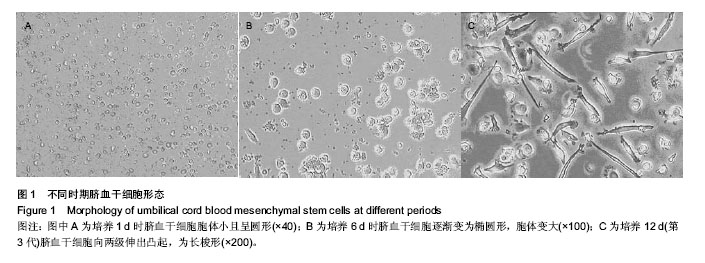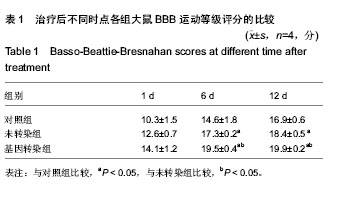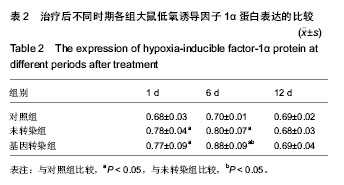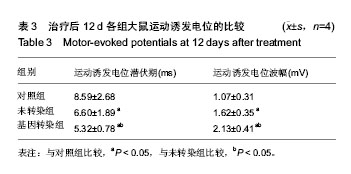| [1]Mauney MC, Blackbourne LH, Langenburg SE,et al. Prevention of spinal cord injury after repair of the thoracic or thoracoabdominal aorta.Ann Thorac Surg. 1995;59(1): 245-252.
[2]Hall ED, Braughler JM.Role of lipid peroxidation in post-traumatic spinal cord degeneration: a review.Cent Nerv Syst Trauma. 1986;3(4):281-294.
[3]Dietz V, Curt A.Neurological aspects of spinal-cord repair: promises and challenges.Lancet Neurol. 2006;5(8):688-694.
[4]Ballard VL.Stem cells for heart failure in the aging heart.Heart Fail Rev. 2010;15(5):447-456.
[5]袁传顺,陆超,陈吉庆. 骨髓间充质干细胞向神经细胞分化的可塑性研究[J].医学综述,2007,13(5):321-323.
[6]步星耀,黄志起,张永福.骨髓间充质干细胞移植治疗脊髓损伤的研究现状[J].中国临床康复,2006,10(21):183-185.
[7]Gong G, Yuan LB, Hu L,et al.Glycyrrhizin attenuates rat ischemic spinal cord injury by suppressing inflammatory cytokines and HMGB1.Acta Pharmacol Sin. 2012;33(1): 11-18.
[8]王涛,谢百发,李露斯. 大鼠脊髓缺血再灌注损伤后炎性细胞因子的变化及其意义[J].中国临床康复,2006,10(28):88-90.
[9]Majmundar AJ, Wong WJ, Simon MC.Hypoxia-inducible factors and the response to hypoxic stress.Mol Cell. 2010; 40(2):294-309.
[10]Xiaowei H, Ninghui Z, Wei X,et al.The experimental study of hypoxia-inducible factor-1alpha and its target genes in spinal cord injury.Spinal Cord. 2006;44(1):35-43.
[11]孙艳,段芳龄,陈香宇,等. 体外诱导人脐血间充质干细胞向肝细胞样细胞分化的研究[J].胃肠病学和肝病学杂志,2004,13(3): 239-243.
[12]王君,张振,张玉明,等.大鼠低氧诱导因子-1α基因转染骨髓间充质干细胞的实验研究[J].现代生物医学进展,2010,10(20): 3838-3841.
[13]肖博晗,陈强,杨东旭,等.髓缺血再灌注损伤模型改进的研究[J].中国实验诊断学,2009,13(6):747-749.
[14]Basso DM, Beattie MS, Bresnahan JC.Descending systems contributing to locomotor recovery after mild or moderate spinal cord injury in rats: experimental evidence and a review of literature.Restor Neurol Neurosci. 2002;20(5):189-218.
[15]赵俊暕,陈乃耀,石峻,等.人脐血间充质干细胞移植对创伤性脑损伤大鼠VEGF分泌及血管新生的影响[J].中国神经免疫学和神经病学杂志,2013,20(4):267-273.
[16]郑志娟,庄文欣,付文玉. 人脐带间充质干细胞的研究进展[J].解剖科学进展,2008,14(1):100-104.
[17]田晓宁.脐血干细胞的特性及其临床应用[J].中国组织工程研究与临床康复,2009,13(36):7197-7200.
[18]Bjugstad KB, Teng YD, Redmond DE Jr,et al.Human neural stem cells migrate along the nigrostriatal pathway in a primate model of Parkinson's disease.Exp Neurol. 2008;211(2): 362-369.
[19]Sanders RD, Xu J, Shu Y,et al.Dexmedetomidine attenuates isoflurane-induced neurocognitive impairment in neonatal rats.Anesthesiology. 2009;110(5):1077-1085.
[20]Sanders RD, Sun P, Patel S,et al.Dexmedetomidine provides cortical neuroprotection: impact on anaesthetic-induced neuroapoptosis in the rat developing brain.Acta Anaesthesiol Scand. 2010;54(6):710-716.
[21]Pucilowska J, Puzerey PA, Karlo JC,et al.Disrupted ERK signaling during cortical development leads to abnormal progenitor proliferation, neuronal and network excitability and behavior, modeling human neuro-cardio-facial-cutaneous and related syndromes.J Neurosci. 2012;32(25):8663-8677.
[22]Brusnahan SK, McGuire TR, Jackson JD,et al.Human blood and marrow side population stem cell and Stro-1 positive bone marrow stromal cell numbers decline with age, with an increase in quality of surviving stem cells: correlation with cytokines.Mech Ageing Dev. 2010;131(11-12):718-722.
[23]孔令胜,于如同,聂冬丽,等. HIF-1α基因修饰神经干细胞移植对大鼠损伤脊髓NF200和GFAP表达的影响[J].中国临床神经外科杂志,2009,14(8):483-487.
[24]Le QT, Giaccia AJ.HIF-alpha, a gender independent transcription factor.Clin Cancer Res. 2003;9(7):2391-2393.
[25]Semenza GL. HIF-1, O(2), and the 3 PHDs: how animal cells signal hypoxia to the nucleus.Cell. 2001;107(1):1-3.
[26]Himes BT, Neuhuber B, Coleman C,et al. Recovery of function following grafting of human bone marrow-derived stromal cells into the injured spinal cord.Neurorehabil Neural Repair. 2006;20(2):278-296.
[27]Hofstetter CP, Schwarz EJ, Hess D,et al.Marrow stromal cells form guiding strands in the injured spinal cord and promote recovery.Proc Natl Acad Sci U S A. 2002;99(4):2199-2204.
[28]Li Y, Chopp M.Marrow stromal cell transplantation in stroke and traumatic brain injury.Neurosci Lett. 2009;456(3): 120-123.
[29]Chen J, Zhang ZG, Li Y,et al.Intravenous administration of human bone marrow stromal cells induces angiogenesis in the ischemic boundary zone after stroke in rats.Circ Res. 2003;92(6):692-699. |




.jpg)